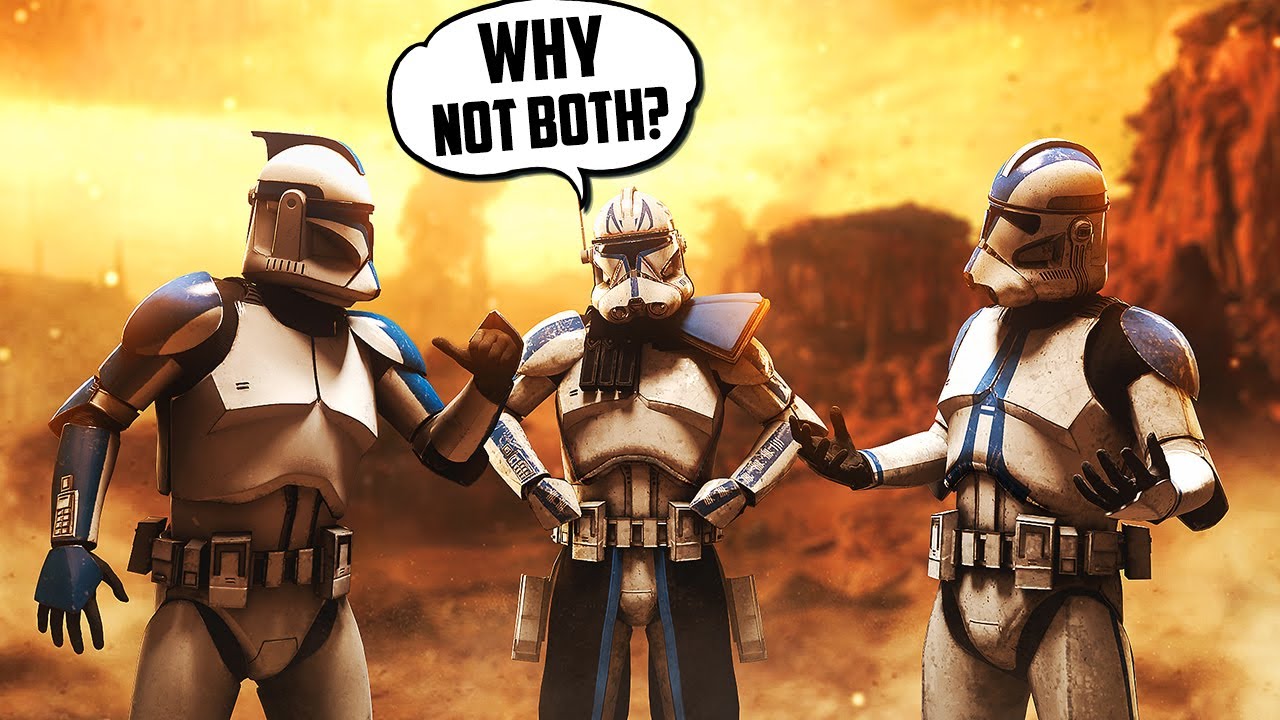The most important function of Phase I armor was that it was pressurized, which meant that a clone trooper could breathe in the vacuum of space. Star Wars: The Clone Wars Season 1, Episode 2, “Rising Malevolence,” showcases this when Jedi Master Plo Koon is stranded in an escape pod with a few surviving clone troopers after being attacked by the Separatist army. Since the episode is set early in the Clone Wars, the troopers are able to exit the pod and defend themselves from the attacking droids.
Phase II armor was implemented roughly a year into the Clone Wars and slowly phased-in after obtaining the approval of ARC troopers like Jesse. Although Phase II armor is still made of the same white plastoid, it’s recognizably different from the Phase I armor. The Phase II helmet crest, for example, does not come to a point in the rear, and there is an upgraded breath filter and annunciator on the front. However, unliked Phase I armor, Phase II armor was not pressurized and so required an external respirator in low-oxygen environments.
In addition to the helmet, another difference in the Phase II armor is the overall functionality. When the Kaminoans designed the Phase I armor, they were not overly familiar with the physiology of humans, so the armor was uncomfortable. As a result, the cloners sought to introduce improvements in the Phase II set of armor. Accordingly, they designed the Phase II armor to be lighter, better fitting and offer more protection.
Another change in Phase II armor was the ability to customize the armor for specialized clones and their various missions. As the war spread across the Galaxy to different worlds, clones were sent into new environments, and they needed their armor to be able to protect them accordingly. This meant that the armor was more expensive than the Phase I model.

